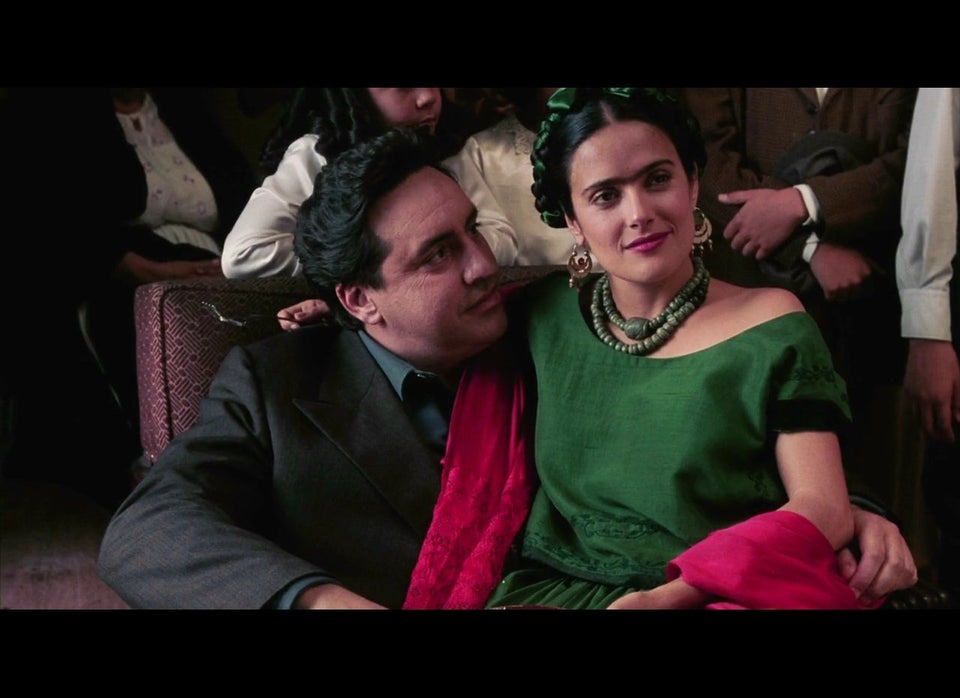If you need to navigate through an intricate criminal network across the border, Edward James Olmos is your man.
Or at least that’s what his character Freddy Suárez is hired to do in John Sayles’ (“Lone Star”) latest independent film “Go For Sisters.” In the movie, Bernice (LisaGay Hamilton) is a parole officer who must enlist the help of Fontayne (Yolanda Ross), her childhood friend and current parolee, and a disgraced ex-LAPD detective (Olmos) to rescue her delinquent son who has gone missing in Mexico.
The Oscar-nominated actor spoke with The Huffington Post on why this role is so different from anything he’s done before and why he feels Latinos still have “a long way to go” when it comes to representation in Hollywood.
“Go For Sisters” brings together the lives of three very different people who are all risking something to save Bernice’s son. They all are motivated by different things but what would you say is the core message of the film?
The core message of “Go For Sisters” is: How far will you go for a friend? And you see it in front of you, you see these two girls going through it and then you find out about my character, Freddy Suárez, and you understand how far he went for his friend and what happened to his life. So, really, that’s what the basic root of the story is: how much would you give?
You’re known for taking on characters with intricate backstories, what attracted you to the role of Freddy?
This is the most distinctive character that I’ve been given an opportunity with. I’m very grateful that I had so many years of preparation to get involved in something like this because if you watch that movie again, if you watch it more than once, you’re going to start studying the behavior of every single moment to moment and you’re going to realize how in-depth those characters are inside of what they’re doing.
Freddy is a type of anti-hero, but what is really driving him throughout the film? Is he mostly thinking of redemption?
I think what he’s thinking about is how is he going to be able to understand, [and] can he take, the macular degeneration (a medical condition resulting in gradual loss of vision) that is happening to him. When we start the movie you don’t know that he’s suffering from anything. You [also] don’t know that as it gets to the end of the movie he’s in worse shape than when he started. So every day it’s getting harder and if you study him you see him going through the physical pain of what he’s going through and that he doesn’t know when the lights will be out all the way around.
This movie was shot last August in Los Angeles, Calexico, Mexicali, San Diego and Tijuana. Is it true that it was shot in 19 days? What was that like?
Yes, 19 days. That was incredibly difficult. When you’re talking about shooting a movie in 19 days that’s one thing, that’s enough of a startling reality... It was 117 degrees outside every day and it was just brutal. It was very difficult and the kicker is we had to do it with 65 different locations inside of those areas, so just divide 19 into 65 and you get about 3.4 location changes per day. That being said there were some days when we only made one move, so that means on another day we had to make five or six moves.
You’ve been an influential Latino actor for a very long time and have had a successful career in Hollywood. How important has it been to take on these roles that don’t play into Latino stereotypes?
I’ve been very fortunate, it’s been a privilege to be inside of this art form and I’m very grateful that I’ve been able to survive and move forward. I know that things have happened since I’ve been here, some things have changed and others have not changed. I [also] know that we have a long way to go before we ever see real strong presence in... motion pictures and television. And in all of these different venues of storytelling we must have parity in this country for the indigenous, for the Asian-Americans, for the Latinos, for the African-Americans and of course the Caucasian/European stories and storytellers also. We just need to have an equality that we still do not have.
Though with the success of movies like “Instructions Not Included” there does seem to be a shift within Hollywood and studios are starting to focus on Latinos now more than ever. How does that makes you feel?
Fantastic, it makes you feel like we’re maybe getting a way to have our culture become a stronger, understood and valued culture in the American society as a whole. We have contributed so much and yet our stories aren’t being told, and when they are told they do what they did in “Argo.” Nobody even knew that Tony Mendez was a Mexican- American from El Paso, it was so subtly played that there was no cultural dynamic in the character whatsoever.
And you might say ‘well I studied Tony, there was no flag waving, there was no taco eating, there was none of that kind of stuff he’s totally All-American’ and I said yea but you look at him, you look at that man and he looks 1,000% like a Mexican-American. He looks very, very Latino, he looks more Latino than I do. At the same time you say well ‘Ben Affleck had to play the role because he wouldn’t of made the movie without playing that role,’ and I said ok that’s great well then Ben Affleck has a responsibility to play a Latino. So play a Latino, Ben Affleck. You know? Get with it, get with the program. Stop being Ben Affleck playing Ben Affleck the Tony Mendez character of this great story. Be an actor, really get yourself together and move forward on that level. And that movie won Best Picture of the year so look what happens. It’s ridiculous. We have a long way to go.”
I know you worked closely with Jenni Rivera on “Filly Brown” and since her one-year death anniversary will be on Dec. 9, I have to ask, as someone who worked with her, how would you describe who she was and the legacy she left behind?
I think her legacy is pretty well understood by the people who appreciated her as a person, a human being and especially as an artist. You know I was very fortunate, I got to meet her when our children went to school together. Johnny went to school with my youngest daughter Dani at Our Lady of Grace, so that’s where we really became friends. We saw each other and we’d sit around talking almost everyday picking up the kids and it was a wonderful experience. One day I asked her to work with me and she said ‘of course.’ So when she found this role, she really ate it up. She should be nominated [for an Oscar], she did a great job. I still get very emotional when I think about her and when I start talking about her it’s very hard. It’s just not been easy and there’s something desperately wrong with that accident, if it was an accident.”
“Go For Sisters” opens in New York on Nov. 8, in Los Angeles on Nov. 15 and nationwide soon after. Check out the movie’s trailer above.

